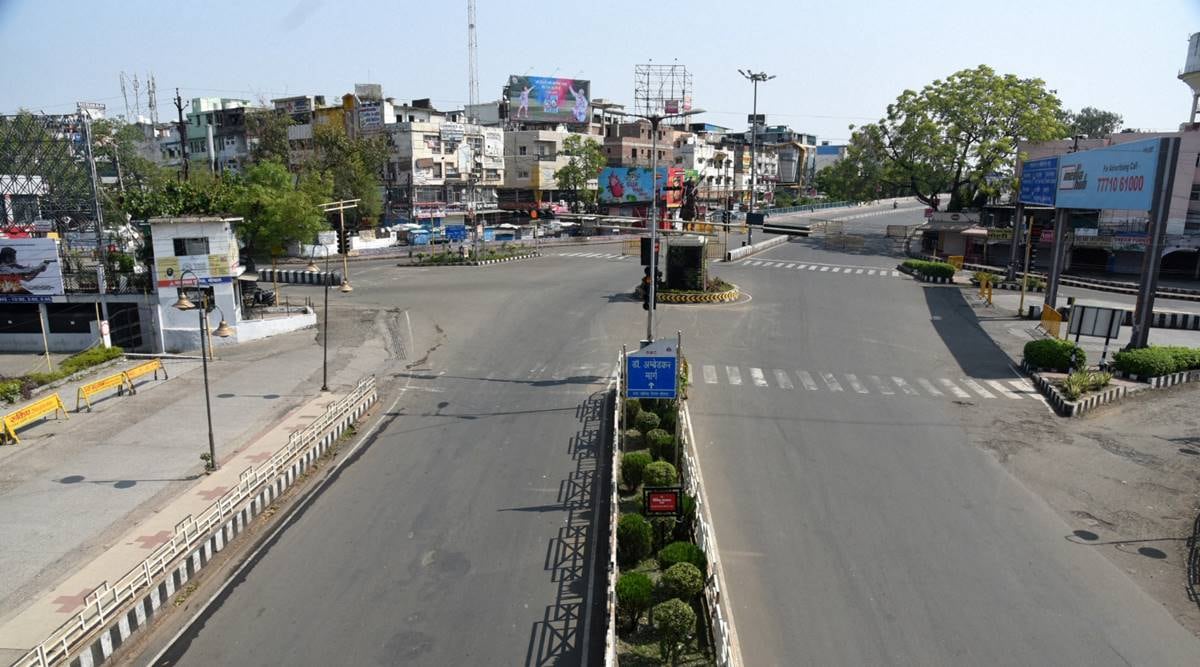 Deserted roads during a lockdown to check the spread of novel coronavirus cases, in Bhopal, Sunday. (PTI)
Deserted roads during a lockdown to check the spread of novel coronavirus cases, in Bhopal, Sunday. (PTI) Rising Covid figures may be a cause of worry again, but looking back, we have come a long way from the tumultuous days of April 2020. Twelve months ago, the prospect of a vaccine was a pipe dream. In actuality, human ingenuity has ensured there are a variety of vaccines — a mere twelve months later. (Covid has been perspective altering, especially when it comes to how we think about time.)
Lockdown began in difficult circumstances for me. My 8-year-old daughter was stuck in Garhwal. I managed to reach her weeks later after a journey that felt like I was travelling through a foreign country. Having traversed North India by car hundreds of times (mostly behind aggravatingly slow trucks billowing poisonous fumes), I have always harboured the wistful fantasy of how wonderful it might be to experience these highways in splendid isolation. Maybe stop the car at whim, get out and stand quietly where you can see the horizon in every direction, listening to the silence of the approaching hills. From an aesthetic point of view, India without people is a very seductive idea. Except, now that I was facing a surreal landscape of vast emptiness all I could feel was eerie dislocation, that this was not how it was meant to be.
Believe it or not, Uttar Pradesh was hauntingly beautiful in Lockdown 1.0. The Palash trees were blazing with orange flowers. The thousands of acres of desolate mango orchards cast dark shadows on either side of the road. The obliterating forces of heat and dust ceased to be a problem, in the absence of all humanity. When the forested route became circuitous alongside the Ganges, it was easy to imagine that leopards roamed here with impunity a hundred years ago. In a crisis everything seems at once familiar and alien. This adventure through lockdown may have even been pleasurable if it wasn’t for the deeply disturbing question — exactly where had India’s teeming millions vanished, overnight? How were they surviving this? In April 2020 the lockdown was so severe I couldn’t buy a bottle of water in Meerut. In those early days only three issues could get you past state borders: death, grave illness, and separation from a minor (some cases).
Though I had steeled myself for hardship — if you choose to travel in a pandemic best be prepared for some torture — I realised also that I’m totally out of practice dealing with the Indian bureaucracy. I view it as a terrifying ordeal. It’s the first thing every tax paying, private sector employee does; insulate themselves from the frustrations of our great nation by studiously avoiding anything government related. Yet here I was, in a queue about three hours long. The guy in front of me was trying to take his father home after an emergency bypass in Dehradun. The lady behind me had a toddler running high fever. Footage of the wrenching distress of migrant labour walking to their villages is etched in our memories. Lest we forget, the sheer lunacy of such an abrupt shutdown adversely impacted lakhs of other stranded Indians as well.
After an interminable wait amid waivers and declarations, I was let through. A century back Lord Curzon had famously observed that the Government of India is a mighty and miraculous machine for doing nothing. Despite monumental challenges, when the systems work it’s only because of foot soldiers who have the thankless job of executing ill-conceived policy. When this catastrophic time is over and scholars are analysing State response, the humble endeavour for future disaster planning should be that in situations when you’re unable to ease citizens’ burdens, at least don’t make things worse.
The writer is director, Hutkay Films
- The Indian Express website has been rated GREEN for its credibility and trustworthiness by Newsguard, a global service that rates news sources for their journalistic standards.

